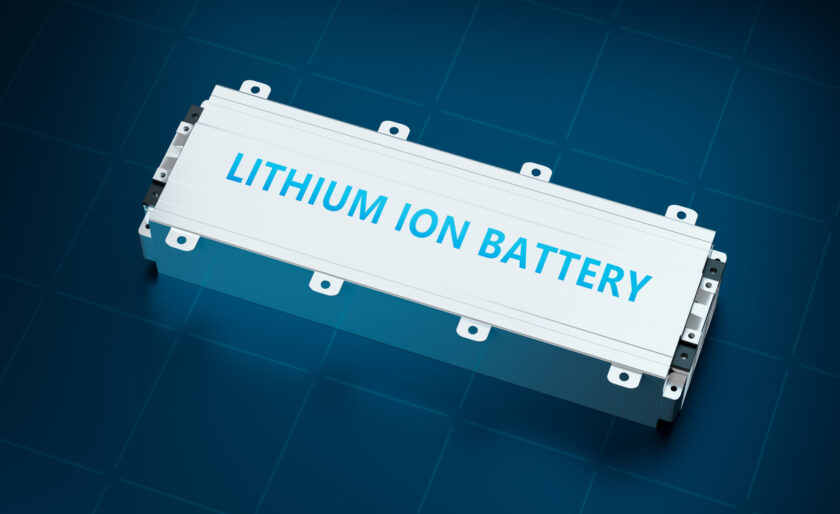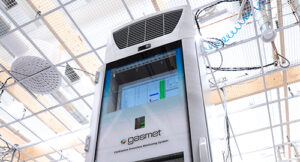
Gas Analysis – the Cornerstone of Battery Safety Testing
Li-Ion batteries (LIBs) are the dominating technology in battery-operated devices. LIBs have become the preferred choice for various applications, including consumer electronics, electric vehicles (EVs), and renewable energy storage systems. LIB usage and research have shown significant growth in recent years and are expected to continue at a high pace in the near future. Major manufacturers continuously invest in research and development to enhance battery performance, increase energy density, and improve safety.
Gas analysis is required in many LIB-related applications including thermal runaway testing, battery abuse, and LIB recycling process development.
Photo credit iStock.com/Black_Kira
Analyzing gas emissions during direct thermal runaway in LIBs
Thermal runaway (TR) is a chain reaction of different chemical reactions in a LIB. In TR, the battery cell temperature often increases extremely rapidly and toxic reaction gases are released. The result can be an uncontrolled battery fire leading to an explosion of toxic fire fumes. TR can be triggered for example by external heat, mechanical battery damage such as penetration, short circuit, or overcharging the battery.
In order to study the TR reaction, research is being performed on how much different gases are released in the LIB TR under different circumstances. Measurement is typically done close to the TR source, leading to high flue gas concentrations and temperatures. Therefore a heated analyzer such as GT6000 Mobilis is required for the measurement.
Typical gases of interest include inorganics such as CO, carbonates such as dimethyl carbonate, acids such as HF and VOCs such as methane. Table 1 lists examples of typical gases of interest. Due to the high amount of gases of interest, FTIR is a suitable technology for measuring the TR gases with a single system. Beyond the gases listed below, GT6000 Mobilis is also applicable for measuring gases such as NOx, ammonia, hydrogen chloride, formaldehyde and methanol.
Table 1. Examples of typical gases of interest in direct thermal runaway testing
| Gas | Concentrations up to |
| Water (H2O) | 20 vol-% |
| Carbon dioxide (CO2) | 20 vol-% |
| Carbon monoxide (CO) | 10000 ppm |
| Hydrogen fluoride (HF) | 500 ppm |
| Methane (CH4) | 2000 ppm |
| Ethylene (C2H4) | 2000 ppm |
| Dimethyl Carbonate (DMC, C3H6O3) | 20000 ppm |
| Ethyl Methyl Carbonate (EMC, C4H8O3) | 10000 ppm |
| Ethylene Carbonate (EC, C3H4O3) | 10000 ppm |
| Diethyl Carbonate (DEC, C5H10O3) | 10000 ppm |
| Acetylene (C2H2) | 500 ppm |
| Hydrogen cyanide (HCN) | 500 ppm |
Example publications:
Composition and Explosibility of Gas Emissions from Lithium-Ion Batteries Undergoing Thermal Runaway
Another typical research interest is battery off-gassing. Offgassing is an early indicator for upcoming TR and can often be measured several minutes before full TR. Detecting a starting TR reaction is vital in many safety aspects and therefore a high priority. Typically gases like HF and different carbonates can be used as an indicator. Sometimes a 1 ppm level is used for HF as a threshold.
Enhancing people safety in the face of battery abuse and thermal runaway
Thermal runaway and battery fires cause a direct threat to the people close to the incident. These people could include first responders, EV passengers and bystanders. This has been highlighted by incidents where first responders have been exposed to toxic fumes by EV fires
There is a growing need for LIB fire toxicity management for people’s safety. The concern is what is the practical implication if LIBs catch fire. This is a primary concern for example for battery producers, test labs and governmental health & safety agencies. There are few set procedures for dealing with lithium battery fires and the interest is growing to gain knowledge
The measurements are generally done where the exposure is happening, leading to smaller gas concentrations and lower temperatures. Therefore an ambient gas analyzer such as GT5000 Terra is typically the optimal choice.
Typical gases of interest include primarily the ones producing the largest short-term toxicity threat. These include HF, HCl, CO and different VOCs. FTIR technology is well-suited for this application due to its ability to measure up to 50 gases simultaneously. Another benefit of FTIR and particularly GT5000 Terra is the ability to use the same system also for other industrial hygiene-related applications.
Type approval and regulated EV safety
Electrical vehicles have particularly large Li-Ion battery compartments. The testing of the vehicles is increasingly regulated to ensure uniform safety across different manufacturers.
ECE-R100 is a regulatory framework followed for example in Europe. It states the passenger cabinet needs to be safe for 5 minutes after the start of a thermal runaway reaction. This can be shown by using a Gasmet FTIR multigas analyzer to measure the air in the cabinet when the reaction is started. Gases of interest include any toxic components including HF, HCl, CO and different VOCs. Abilities to measure tens of gases simultaneously and to be able to detect unknown gases are vital to detect all toxic compounds.
The measurements can be done by the EV manufacturers themselves. It is also possible to outsource the testing to external testing laboratories. Depending on the country, regional health & safety agencies may be involved in the testing.
GT5000 Terra is typically used for this application due to its FTIR technology combined with a very high level of portability and usability.
Analyzing gas emissions in battery recycling and manufacturing processes
LIB recycling is an emerging topic driven by increasing regulations to use recycled material in the production of new battery cells. This reduces dependence on the availability of virgin materials as well as offers meaningful second-life applications for end-of-life batteries. Battery manufacturers have to increasingly show they can handle the full battery lifecycle and consider battery recycling already at the battery design phase.
The recycling of LIBs is however a complicated task due to their complex structure and potential hazards relating to chemical reactions potentially appearing in the batteries during recycling. For example, if a process involving a crusher or shredder is used, the released gas composition both upstream and downstream of the crusher as well as in the solvent evaporation zone are typically of interest.
Similarly, thermal processes are also used for the combustion of the solvents to recover the remaining black mass that contains rare metals used in the LIB structure. Other processes are targeted towards recovering the solvents.
For the development of the recycling process, generally, high gas concentrations are measured. GT6000 Mobilis as a heated system offers a way to characterize these released fumes.
Another related application is to ensure worker safety in an established recycling process. Industrial hygiene measurements with GT5000 Terra are commonly done for the health & safety of workers to control the exposure to solvents and compounds released in the process.
Typical gases of interest can be identified and quantified with a single FTIR system in both cases. These gases include H2O, CO2, CO, carbonates, HF, benzene, ammonia, toluene and methanol.
LIB manufacturing processes are generally more established. The main gas analysis need is often industrial hygiene measurements in the manufacturing area. Cells that are physically damaged, were assembled improperly, or have design defects can cause the presence of a wide range of toxic gases. Typical gases of concern include HF and nickel carbonyl Ni(CO)4 which are extremely toxic.
GT5000 Terra is commonly used in this application due to its ability to detect and identify hundreds of potentially hazardous gases with instant results. One of its strengths is the ability to use it also for R&D purposes, justifying versatile multiuse.
Ensuring BESS safety: continuous gas monitoring in energy storage
Battery Energy Storage Systems (BESS) are systems used for storing energy from different sources to be able to release it when needed. Typical applications include storing electricity created by wind or solar power to be released when the electricity demand peaks. With increasing renewable energy production, the need for BESS is climbing rapidly. For example, in the UK alone more than 700 projects are being planned.
As a “container full of batteries”, the safety of BESS needs to be ensured. Early and continuous gas detection to avoid gas build-up is required for example in the UK NFPA 855 regulation. This can be achieved with a continuous monitoring of potential off-gasses in the vent systems.
CEMS II e continuous emissions monitoring system can be applied for monitoring the vents for any gases of interest. Utilizing the FTIR technology in a continuous format, up to 50 gases can be identified and quantified simultaneously including components like HF.
Other LIB-related gas detection applications are often related to LIB logistics or warehousing. Several companies are developing and producing different containers for repeated transportation or for managing hazardous LIB situations by sealing containers. The general gas analysis needs to study the effectiveness and safety of these containers. GT6000 Mobilis is the go-to system for measuring potential hazardous gases caused by LIB thermal runaways.


